As the 2019 summer racing season gets underway, your SailZing editors have been gathering race experiences to help drive home concepts about boat speed, handling, strategy, and tactics. In the past two weeks, we found four examples of downwind strategy mistakes that caused sailors (including ourselves!) to get passed quickly. Names omitted to protect the guilty!
#1. Stop Thinking About Breeze
Springtime winds on lakes are often so puffy that connecting the dots to stay in the puffs is a full-time job. One missed opportunity can quickly lose you places.
In the example below, a race leader (Blue) gave up several boat lengths to the 2nd place boat (Yellow) by initially sailing lower than the rhumb line and away from a fairly large puff. When Blue sees the puff, she gybes toward it, but it’s too late. The extra distance she sailed away from the puff is unrecoverable.
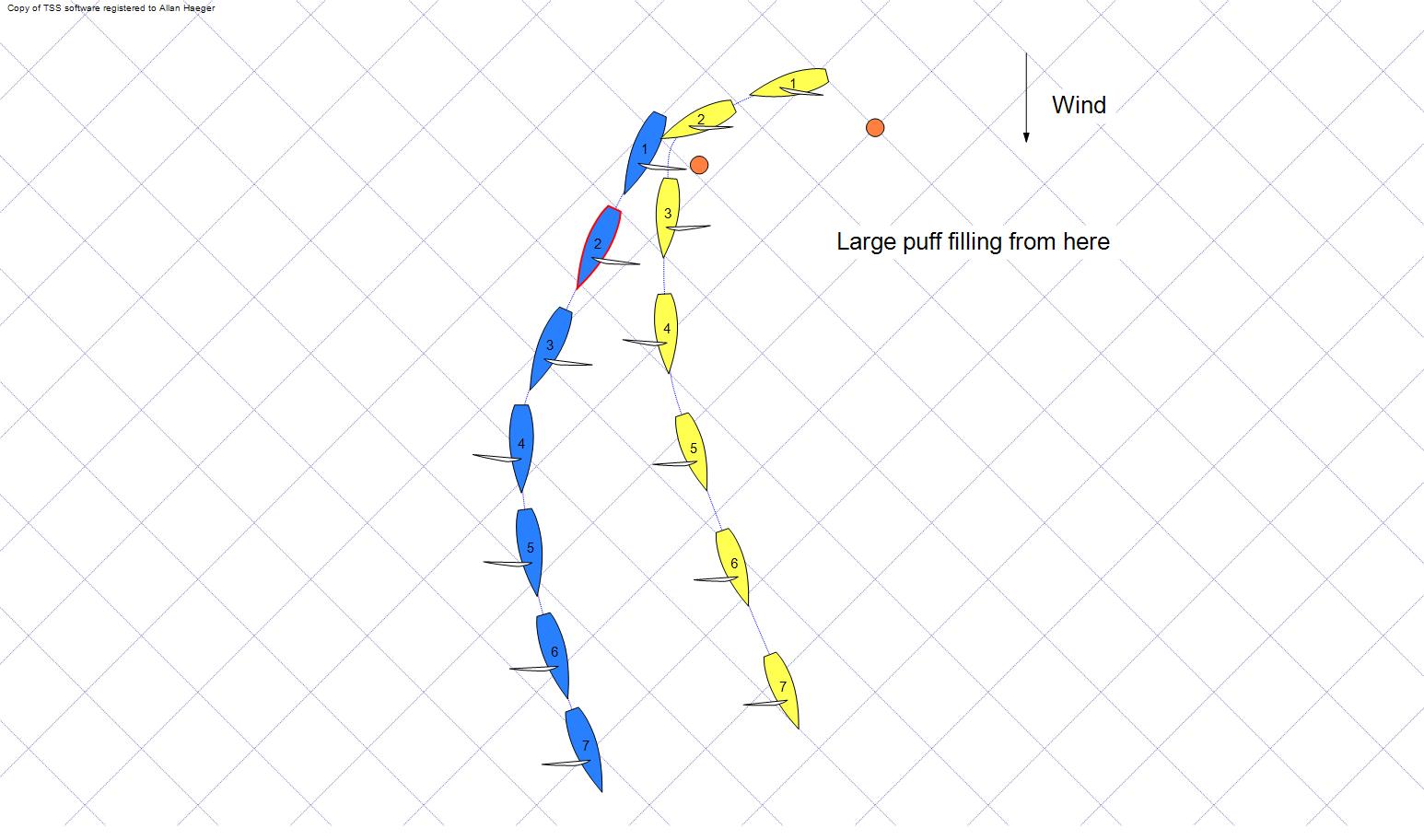
Is this a downwind strategy mistake? In Blue’s defense, it may be that the puff wasn’t formed when she rounded the mark and started sailing the leg. Blue may also have wanted to get free of the disturbed air from boats behind. And, Yellow, being behind initially, had the advantage of getting the puff first. When Blue saw the puff, she responded by gybing; could she have headed up to the puff more aggressively once she gybed?
#2. Let Someone Roll Over the Top of You
Boats behind and to windward within 5-6 boat lengths will disturb your air and may find it easy to roll over you. Letting this happen is a common downwind strategy mistake.
In the example below, Blue is in slightly better breeze and was overtaking Yellow. Yellow did not react and encountered Blue’s’s wind shadow at position 5. At this point, it was too late for Yellow to do much.
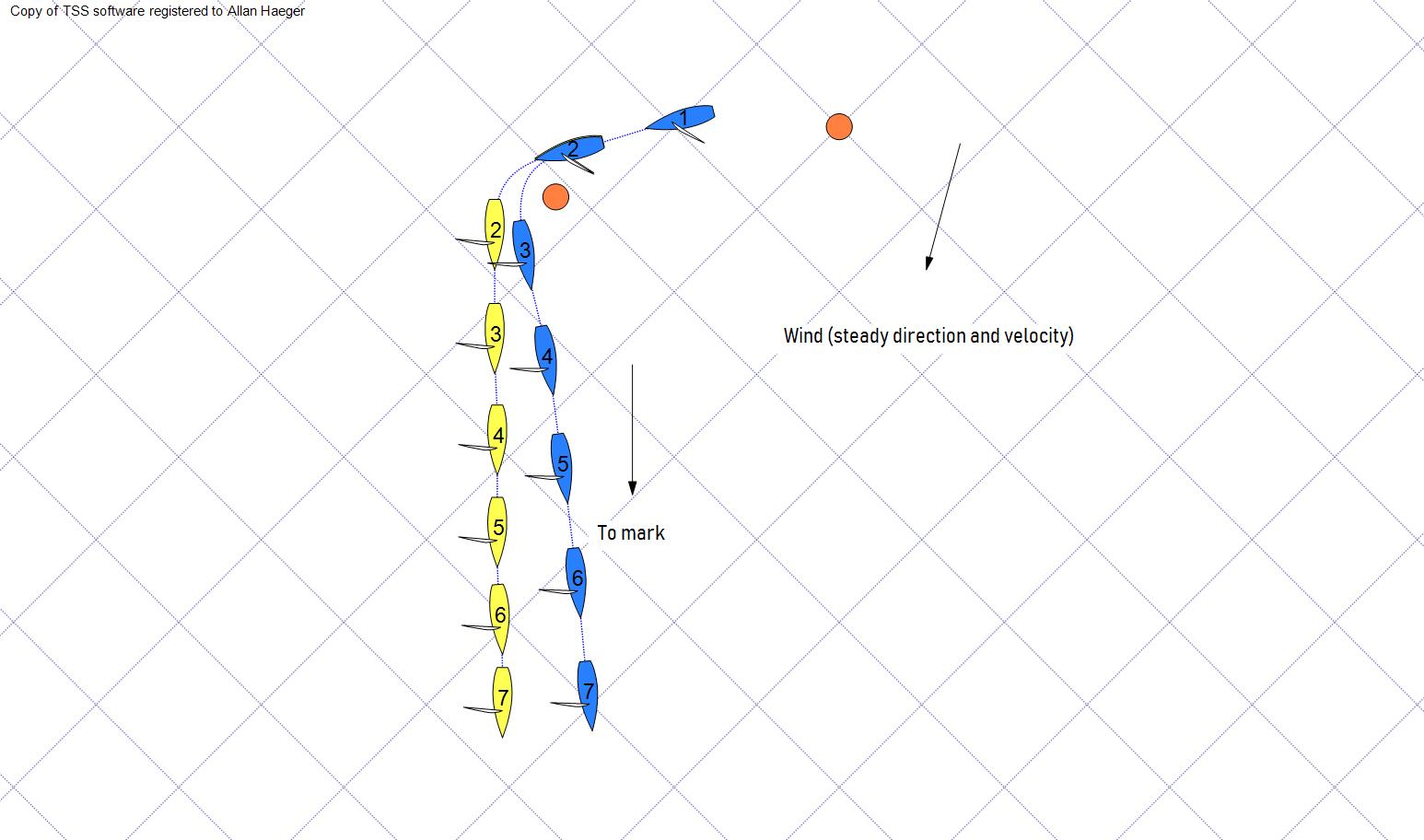
Don’t let this happen! Head up an overtaking boat to stay clear of its wind shadow and to send a message that you won’t let it roll over you. If it’s advantageous, gybe away to keep your air clear.
#3. Sail Too High Early in the Run
To make progress downwind, you have to sail as low as possible without compromising speed.
In the example below, a leading boat (Yellow) rounded the windward mark and sailed high towards some apparent advantageous pressure. Once that pressure faded she was forced to sail lower in less pressure. A cagey light air specialist (Blue) rounded behind, sailed lower initially and then was able to sail higher and faster in the last half of the leg.
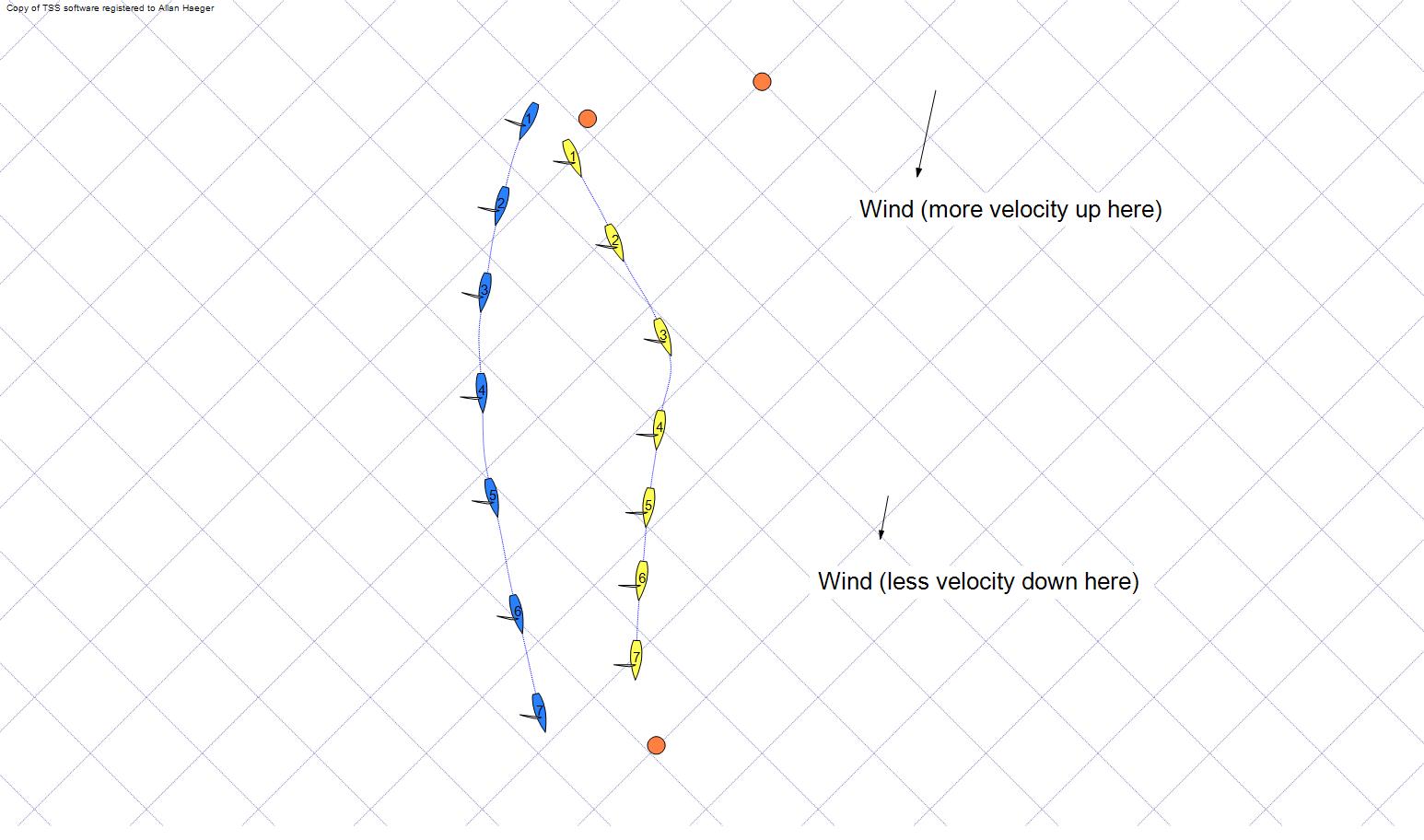
If you expect the wind to decrease toward the end of the leg, try to sail low early, so that you can sail higher when the wind is light.
#4. Bad First Move When Rounding
You have lots of options when rounding the windward/offset mark. If you’re ready to choose correctly, you can quickly pass others that are less prepared.
In the example below, the wind is from the right. Yellow rounds the windward mark and bears off on starboard. Blue rounds behind Yellow and gybes immediately at the offset. Blue is now on the headed gybe and sailing fast and low toward the next mark. After a few boat lengths, Blue has caught Yellow.
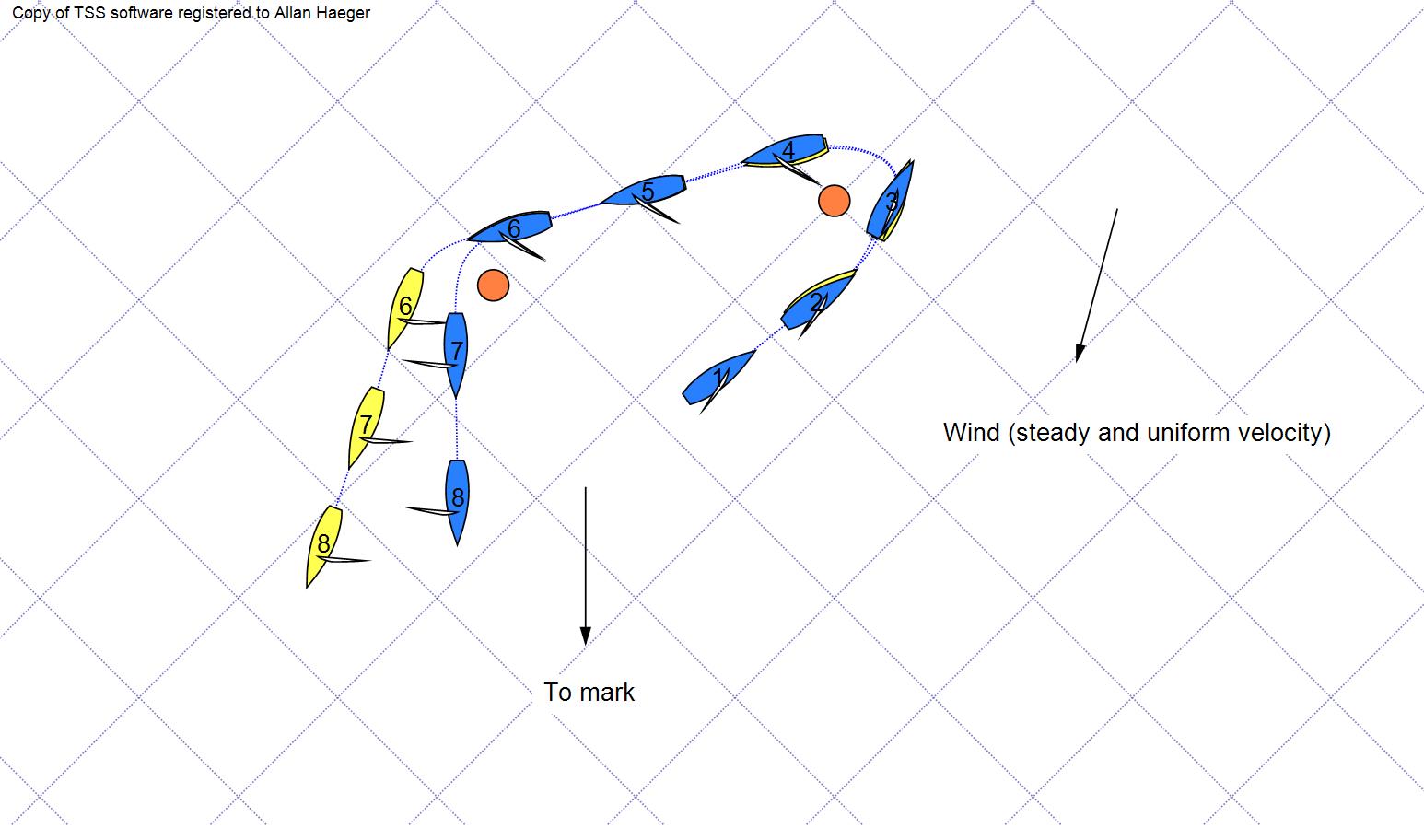
Downwind Strategy Mistakes: More Ways to Get Passed (Part 2)

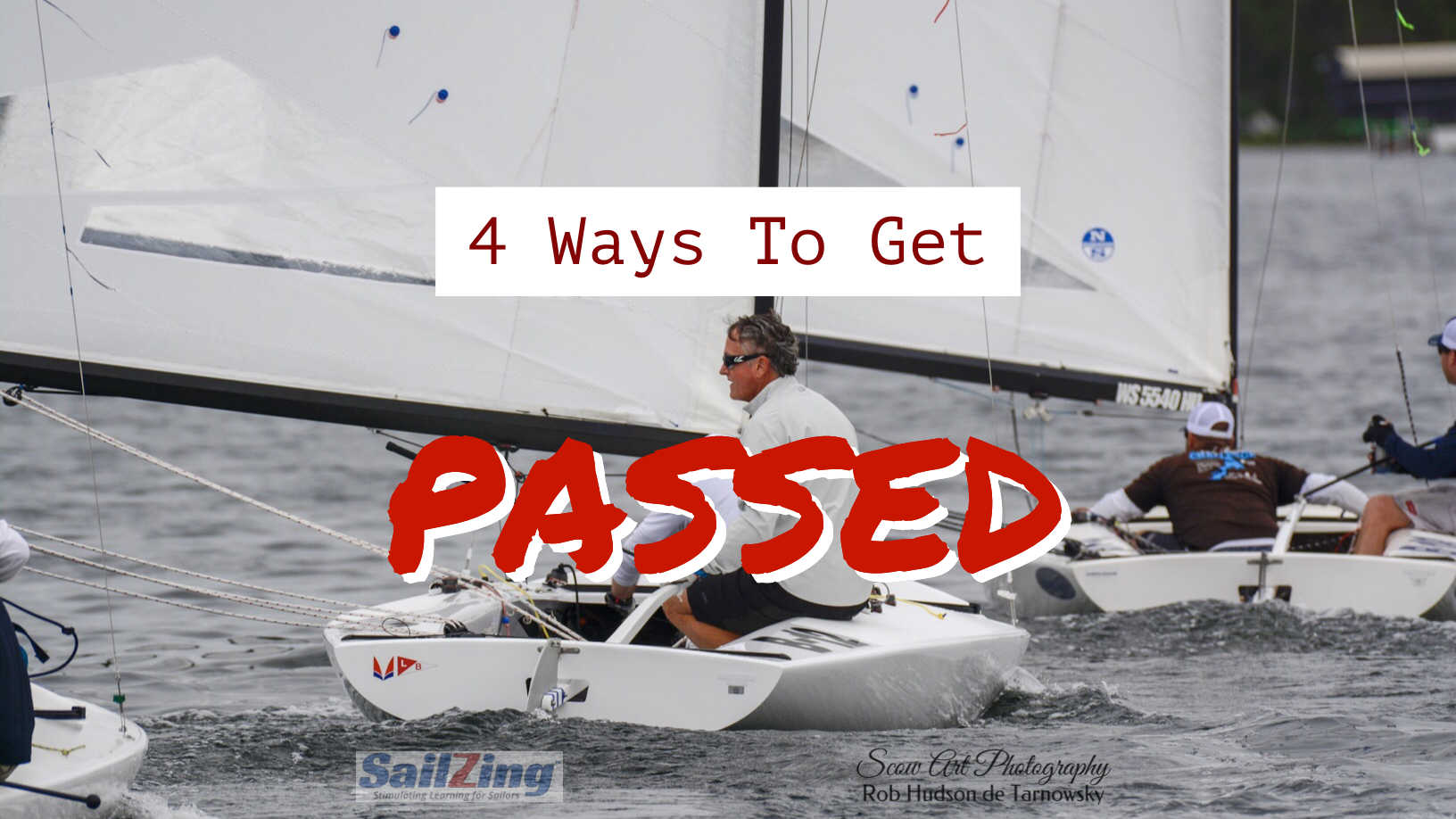
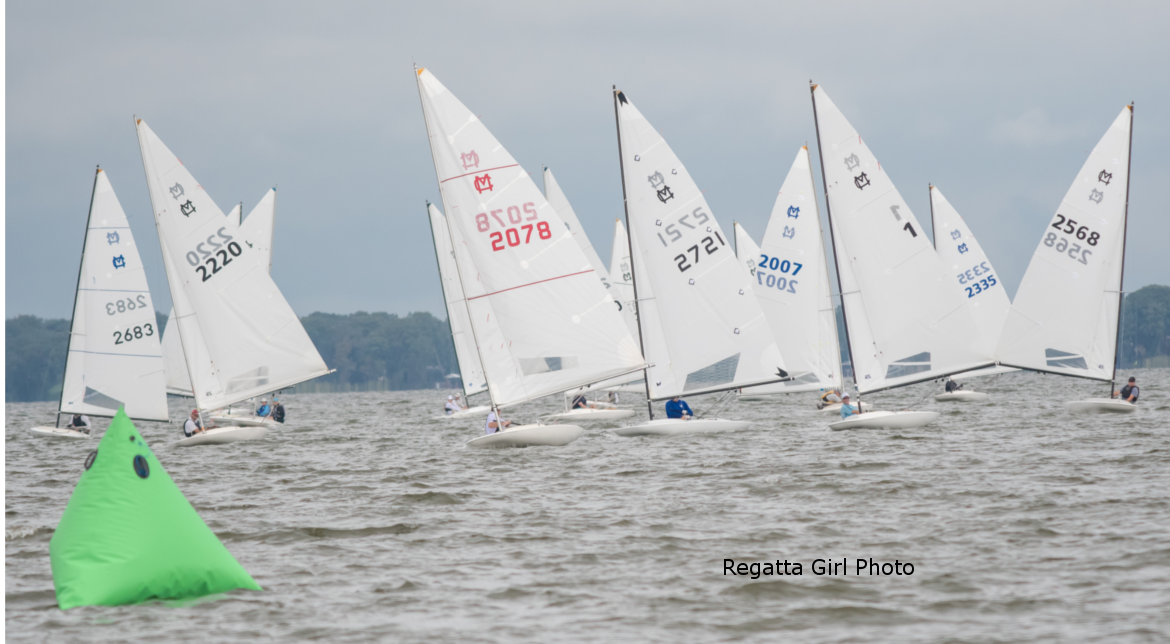
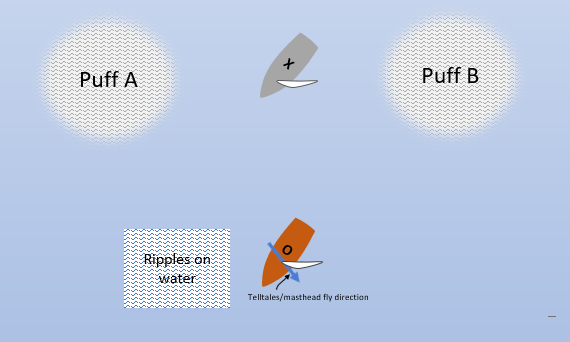
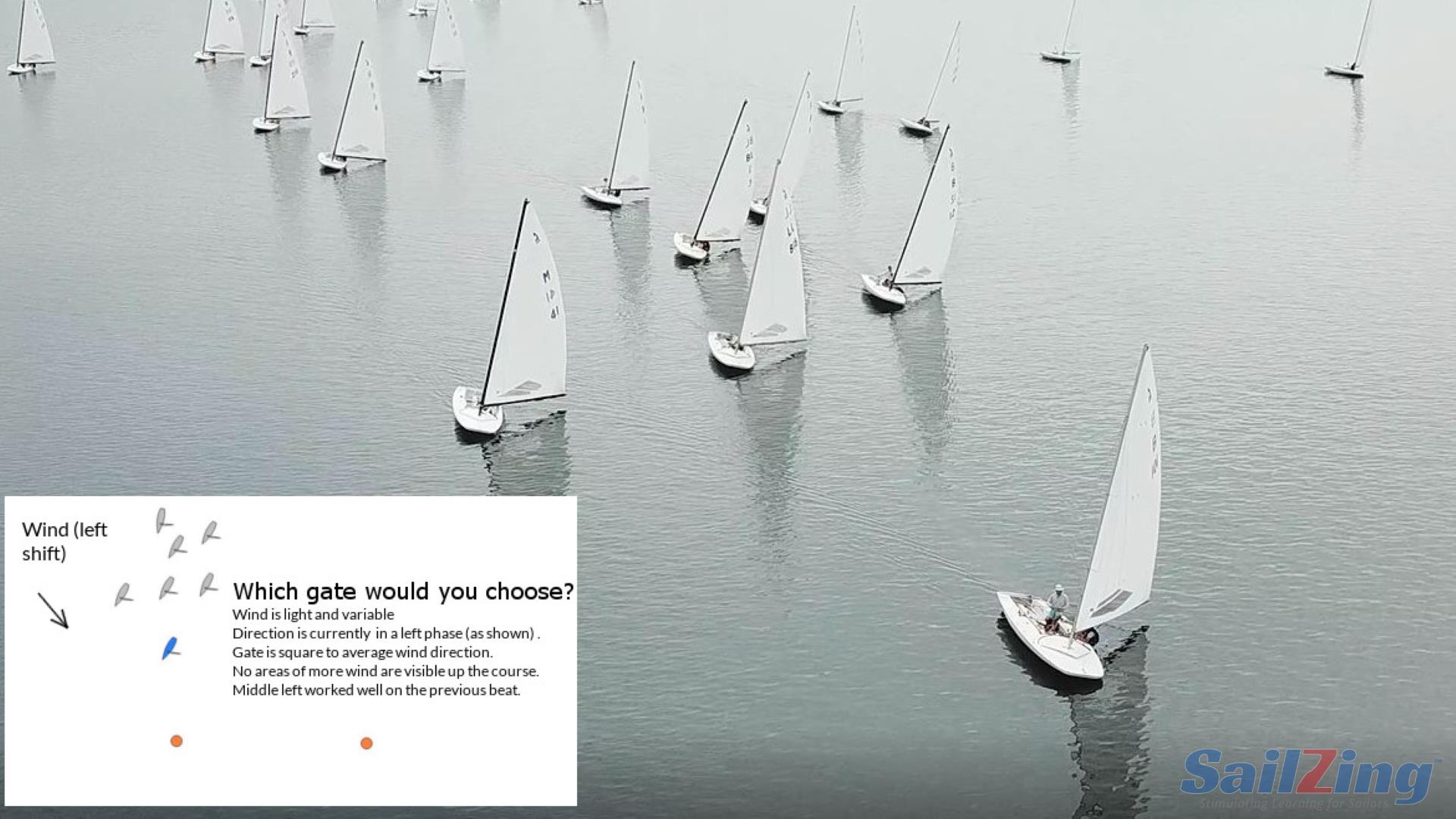

Regarding #2. Let Someone Roll Over the Top of You. I was passed by a Solo (whilst sailing a Laser Standard rig) in lightish airs in a similar situation – downwind, both on port tack initially. I luffed him hard to keep him astern but he pulled a swift gibe onto starboard and then invoked rule 10. What should I have done/anything I could of done? I think maybe I should have accepted his better boat speed and not luffed him so hard? Thanks
Thanks for the comment. I agree that you should probably have accepted his better boat speed and let him pass. I assume this is some sort of handicap race, since the boats are different, so his place didn’t affect yours(?) If so, it’s also one less boat behind to worry about getting on your air. Any other thoughts from readers?